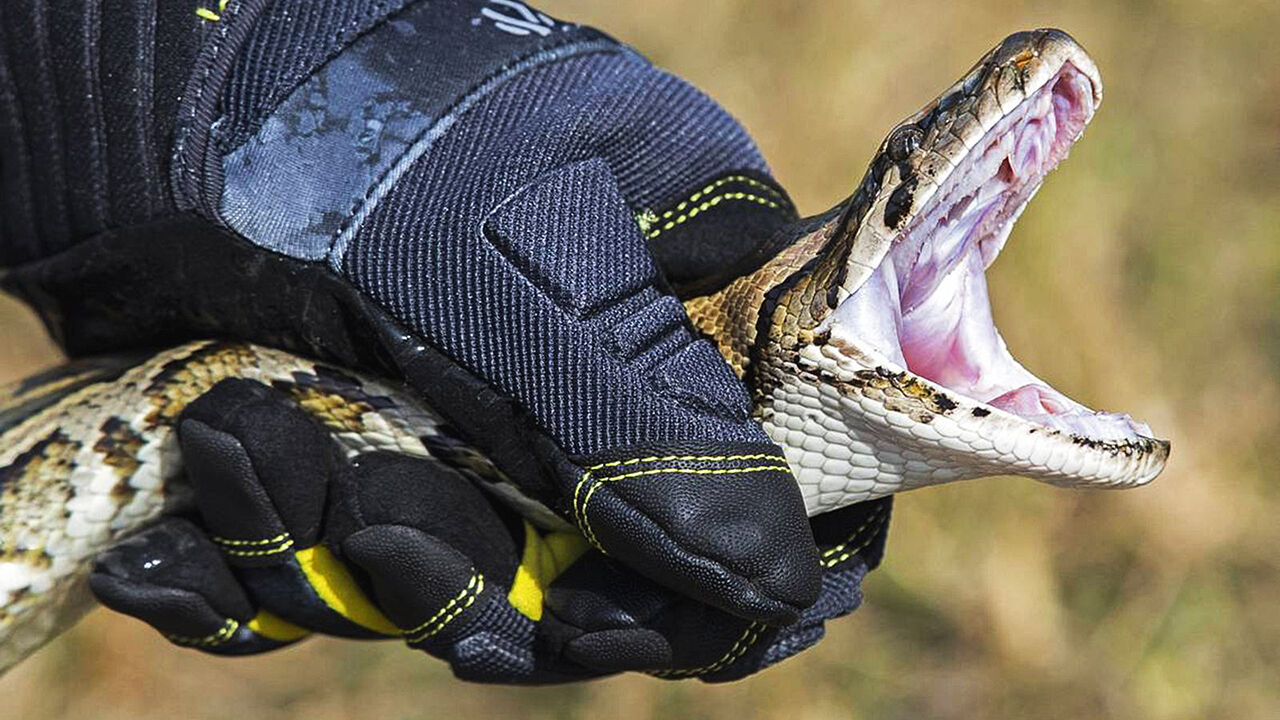The Florida Everglades have been under siege from an unlikely predator – the Burmese pythons. Originally introduced as exotic pets, these snakes grew too large to handle and were set loose in the Everglades where they wreaked havoc on the native wildlife population. With their insatiable appetite, these pythons decimated the furry animal population in the park, causing a drastic 95% decline.
These invasive pythons, which can reach almost 20 feet in length, have been known to take down even alligators and consume them whole. With no natural predators to keep their population in check, the responsibility of managing the python invasion fell upon the people of Florida. Recognizing the urgent need to address this ecological crisis, the Florida Fish and Wildlife Conservation Commission initiated the Florida Python Challenge as a proactive measure to tackle the python infestation.
In a recent development, Taylor Stanberry emerged as the Ultimate Grand Prize winner of the 2025 Florida Python Challenge. Stanberry's remarkable feat of eliminating 60 Burmese pythons during the competition earned her the prestigious title. The event, which spanned ten days, saw participants like Stanberry venture into the wilds of Florida to track down and remove these invasive reptiles.
Stanberry's achievement was lauded during the Florida Fish and Wildlife Conservation Commission meeting, where she was awarded the $10,000 grand prize for her exceptional contribution to python removal efforts. Her success in eliminating 33 female pythons and 27 males underscores the relentless dedication required to combat the python invasion effectively.
The Florida Python Challenge serves as a crucial platform for raising public awareness about the threat posed by invasive species like the Burmese pythons to the delicate ecosystem of the Everglades. Stanberry's victory symbolizes a significant step towards mitigating the adverse impact of pythons on the region's native flora and fauna.
The competition, which attracted nearly 934 registered participants from the United States and Canada, marked a collective effort to address the python proliferation in South Florida. With a total of 294 pythons removed during the challenge, the event served as a vital initiative in managing the invasive python population and safeguarding the ecological balance of the Everglades.
The relentless efforts of conservationists, researchers, and volunteers have been instrumental in curbing the spread of Burmese pythons in Florida. Organizations like the Conservancy of Southwest Florida have spearheaded extensive python removal programs, resulting in the extraction of over 20 tons of pythons from the region's wilderness.
Ian Bartoszek, a wildlife biologist leading the Conservancy's python removal efforts, highlights the arduous process of capturing and studying these cryptic invaders. Through meticulous research and collaboration with scientific institutions like the University of Florida, the team has gained valuable insights into the dietary habits and ecological impact of Burmese pythons on the local wildlife.
The success of these python removal programs hinges on the collaborative efforts of multiple stakeholders, including researchers, conservationists, and community members. By engaging in proactive conservation initiatives and reporting python sightings, individuals can contribute to the ongoing efforts to control the spread of invasive species and protect the biodiversity of fragile ecosystems like the Florida Everglades.
As the battle against invasive pythons continues, the commitment of dedicated individuals like Taylor Stanberry and conservation organizations remains critical in preserving the natural heritage of Florida's unique ecosystems. Through concerted action and public engagement, communities can work together to safeguard the environment and combat the threats posed by invasive species on a global scale.

